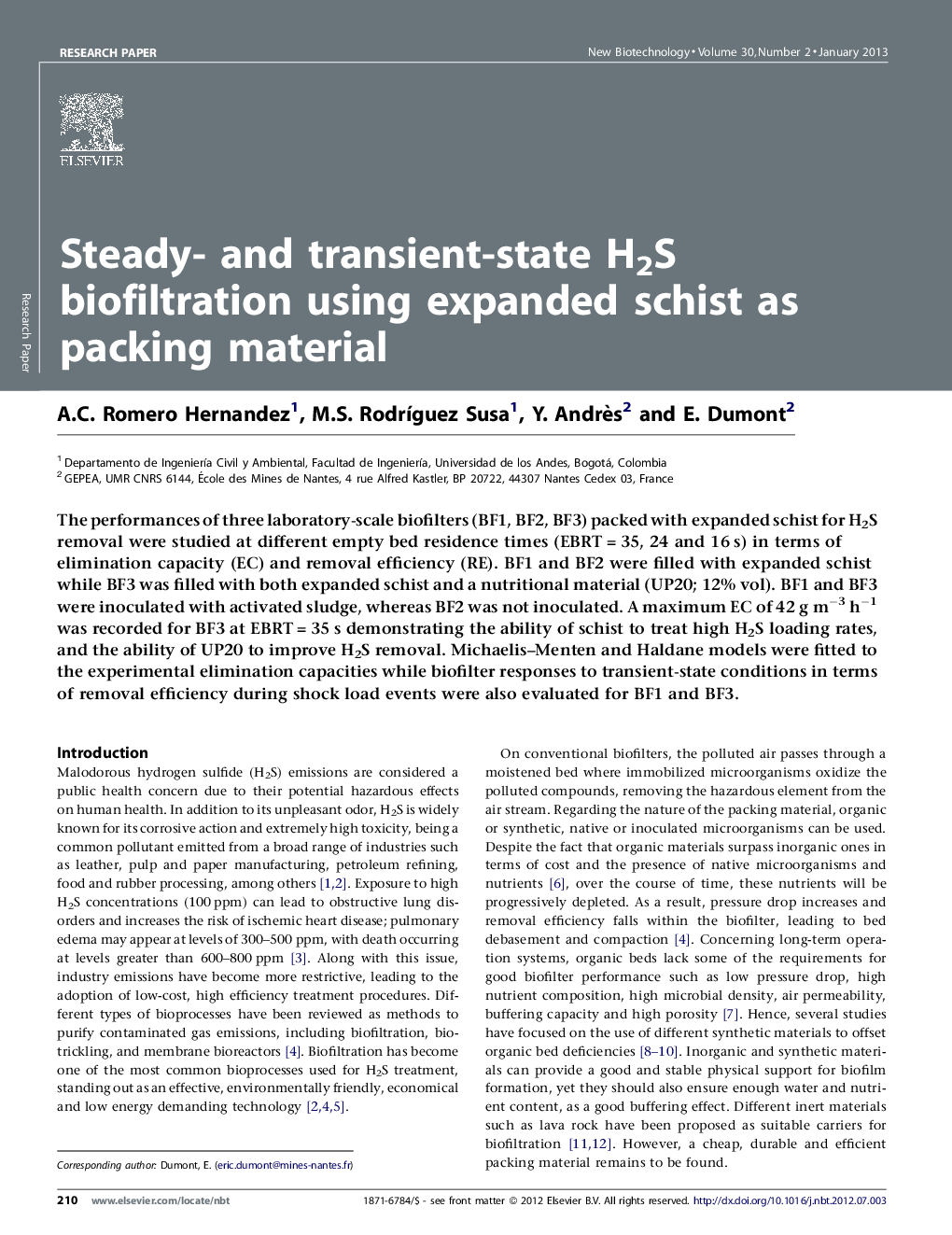| کد مقاله | کد نشریه | سال انتشار | مقاله انگلیسی | نسخه تمام متن |
|---|---|---|---|---|
| 33422 | 44977 | 2013 | 9 صفحه PDF | دانلود رایگان |

The performances of three laboratory-scale biofilters (BF1, BF2, BF3) packed with expanded schist for H2S removal were studied at different empty bed residence times (EBRT = 35, 24 and 16 s) in terms of elimination capacity (EC) and removal efficiency (RE). BF1 and BF2 were filled with expanded schist while BF3 was filled with both expanded schist and a nutritional material (UP20; 12% vol). BF1 and BF3 were inoculated with activated sludge, whereas BF2 was not inoculated. A maximum EC of 42 g m−3 h−1 was recorded for BF3 at EBRT = 35 s demonstrating the ability of schist to treat high H2S loading rates, and the ability of UP20 to improve H2S removal. Michaelis–Menten and Haldane models were fitted to the experimental elimination capacities while biofilter responses to transient-state conditions in terms of removal efficiency during shock load events were also evaluated for BF1 and BF3.
► Expanded schist for H2S biofiltration was studied at EBRT = 35, 24 and 16 s.
► The ability of the expanded schist to treat high H2S loading rates was demonstrated.
► The good mechanical behavior of the schist was observed over one year.
► Shock loads confirmed the ability of the schist to withstand sudden high load changes.
► Experimental results were fitted with Michaelis–Menten and Haldane models.
Journal: New Biotechnology - Volume 30, Issue 2, 25 January 2013, Pages 210–218